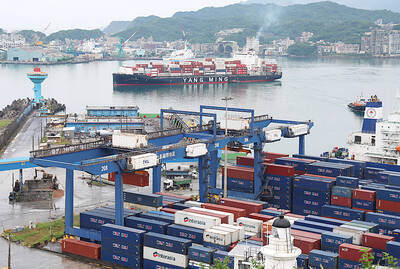Danish shipper Moller-Maersk, the biggest container carrier in the world on Monday that it has signed a contract for a South Korean shipyard to build it 10 giant container ships over the next three years.
Earlier in Seoul, Daewoo Shipbuilding and Marine Engineering, the country’s second largest shipbuilder, said it would sign the contract for the ships, each with a capacity of 18,000 TEU (twenty-foot equivalent unit) containers.
“The new vessels will not just set a new benchmark for size; in addition, they will ensure Maersk Line reaches its goals at the lowest possible cost,” Moller-Maersk said in a statement.
The new container vessels, at 400m long, 59m wide and 73m tall, will be “the largest vessel of any type known to be in operation,” but emit half as much carbon dioxide as the industry average for Asia/Europe trade, the statement added.
“One of the biggest challenges we face in the world today is how to meet the growing needs of a growing population and while minimizing the impact that is going to have on our planet,” said Maersk Line chief executive Eivind Kolding.
Maersk Line has signed a contract for 10 of the world’s largest, most efficient container vessels with an option to buy another 20.
The vessels will have a capacity of 18,000 TEU and will be delivered from Korea’s DSME shipyard from 2013 to 2015.

The demise of the coal industry left the US’ Appalachian region in tatters, with lost jobs, spoiled water and countless kilometers of abandoned underground mines. Now entrepreneurs are eyeing the rural region with ambitious visions to rebuild its economy by converting old mines into solar power systems and data centers that could help fuel the increasing power demands of the artificial intelligence (AI) boom. One such project is underway by a non-profit team calling itself Energy DELTA (Discovery, Education, Learning and Technology Accelerator) Lab, which is looking to develop energy sources on about 26,305 hectares of old coal land in

Taiwan’s exports soared 56 percent year-on-year to an all-time high of US$64.05 billion last month, propelled by surging global demand for artificial intelligence (AI), high-performance computing and cloud service infrastructure, the Ministry of Finance said yesterday. Department of Statistics Director-General Beatrice Tsai (蔡美娜) called the figure an unexpected upside surprise, citing a wave of technology orders from overseas customers alongside the usual year-end shopping season for technology products. Growth is likely to remain strong this month, she said, projecting a 40 percent to 45 percent expansion on an annual basis. The outperformance could prompt the Directorate-General of Budget, Accounting and

Netflix on Friday faced fierce criticism over its blockbuster deal to acquire Warner Bros Discovery. The streaming giant is already viewed as a pariah in some Hollywood circles, largely due to its reluctance to release content in theaters and its disruption of traditional industry practices. As Netflix emerged as the likely winning bidder for Warner Bros — the studio behind Casablanca, the Harry Potter movies and Friends — Hollywood’s elite launched an aggressive campaign against the acquisition. Titanic director James Cameron called the buyout a “disaster,” while a group of prominent producers are lobbying US Congress to oppose the deal,

Two Chinese chipmakers are attracting strong retail investor demand, buoyed by industry peer Moore Threads Technology Co’s (摩爾線程) stellar debut. The retail portion of MetaX Integrated Circuits (Shanghai) Co’s (上海沐曦) upcoming initial public offering (IPO) was 2,986 times oversubscribed on Friday, according to a filing. Meanwhile, Beijing Onmicro Electronics Co (北京昂瑞微), which makes radio frequency chips, was 2,899 times oversubscribed on Friday, its filing showed. The bids coincided with Moore Threads’ trading debut, which surged 425 percent on Friday after raising 8 billion yuan (US$1.13 billion) on bets that the company could emerge as a viable local competitor to Nvidia